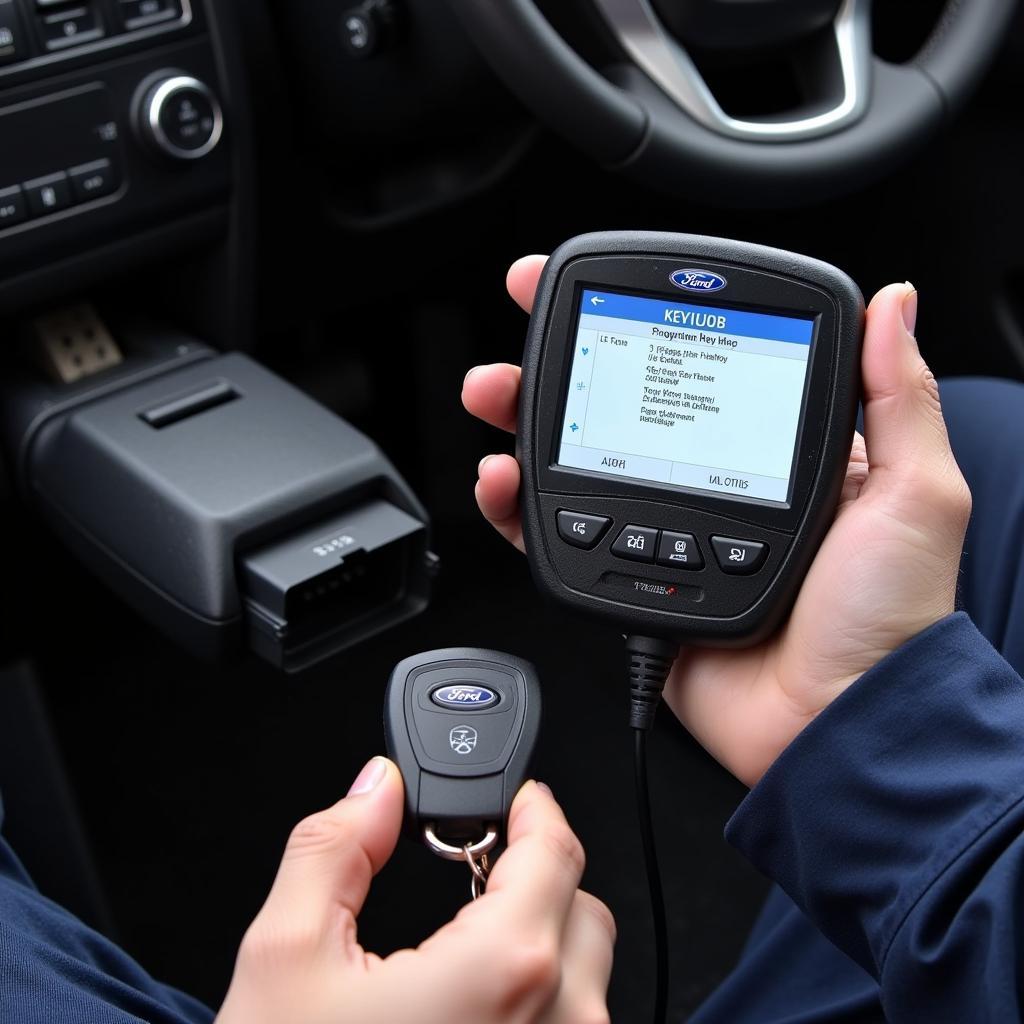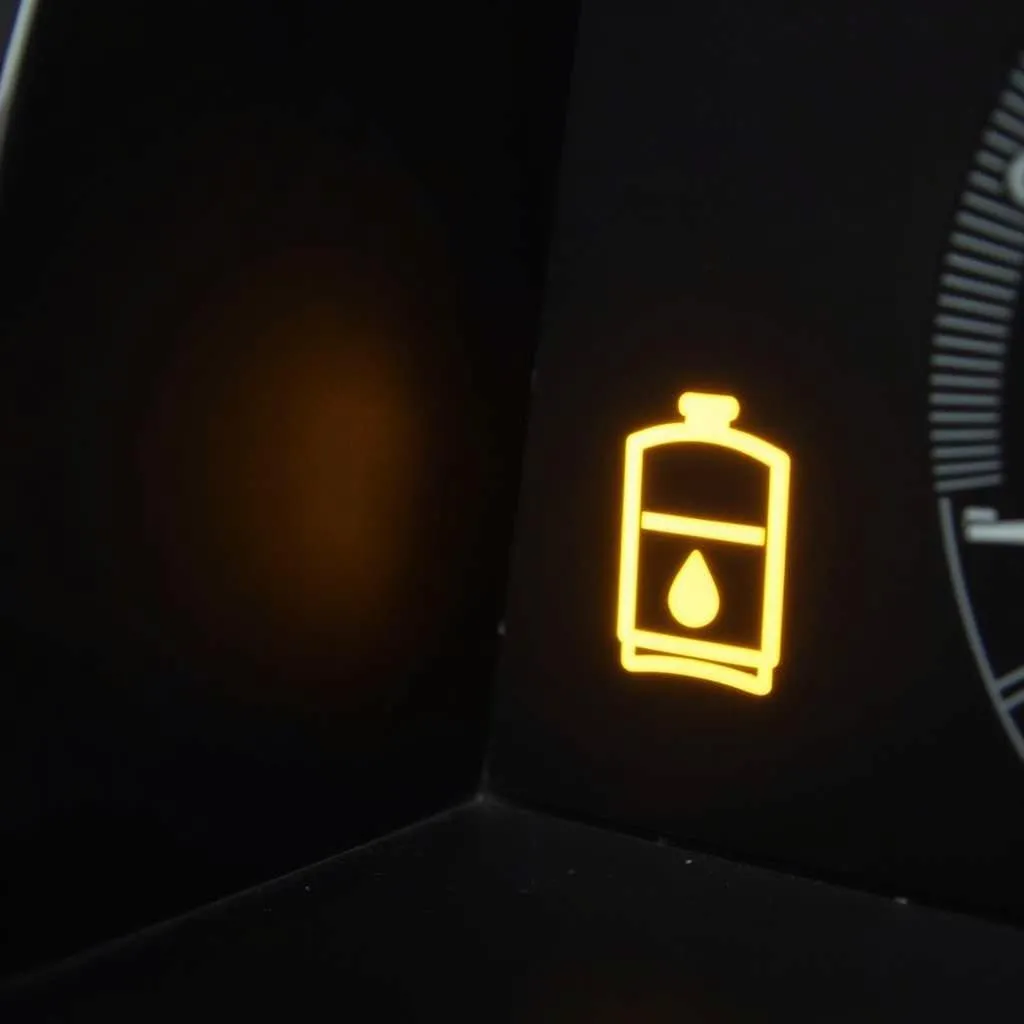The AdBlue warning light on your Ford vehicle can be a concerning sight. It signifies a potential issue with the emissions control system that can hinder your driving experience and even lead to engine damage. This guide will delve into the common causes of the AdBlue warning light, offer solutions to resolve the problem, and answer some frequently asked questions.
Why Is My Ford’s AdBlue Warning Light On?
The AdBlue warning light on your Ford is triggered when there’s a problem with the AdBlue system, which plays a crucial role in reducing harmful nitrogen oxides (NOx) emissions from your vehicle. Here are the most likely reasons why you might be seeing this light:
Low AdBlue Fluid Level
The most common cause of the AdBlue warning light is simply a low fluid level. AdBlue is a urea-based solution that gets injected into the exhaust system to break down NOx emissions. When the fluid level drops below a certain threshold, the warning light comes on.
- Solution: Simply refill your AdBlue tank with the recommended fluid. You can usually find AdBlue at most gas stations or auto parts stores.
AdBlue System Malfunction
Sometimes, the AdBlue system itself might malfunction, leading to the warning light. This could be due to a faulty sensor, a clogged injector, or a problem with the dosing module.
- Solution: If you suspect a system malfunction, it’s best to take your Ford to a qualified mechanic. They can diagnose the issue and perform any necessary repairs.
What Happens If I Ignore the AdBlue Warning Light?
Ignoring the AdBlue warning light is not advisable. Here’s why:
- Restricted Driving: If the AdBlue level drops too low, your vehicle may enter a “limp mode,” restricting your driving speed and performance.
- Engine Damage: In some cases, ignoring the warning light could lead to engine damage. The system is designed to prevent excess NOx emissions, and failing to maintain the AdBlue level could put your engine at risk.
- Legal Consequences: In some jurisdictions, driving a vehicle with a faulty emissions control system can lead to fines or even legal action.
Frequently Asked Questions
1. How Often Should I Refill AdBlue?
The frequency of AdBlue refills depends on your driving habits and the size of the AdBlue tank in your vehicle. Generally, you can expect to refill AdBlue every 5,000 to 10,000 miles.
2. Can I Use Any AdBlue Fluid?
It’s essential to use only genuine AdBlue fluid specifically designed for your Ford vehicle. Using incompatible fluids can damage your AdBlue system and lead to costly repairs.
3. How Do I Check the AdBlue Level?
Your Ford vehicle likely has a dashboard display that shows the AdBlue level. Alternatively, you can check the AdBlue tank itself, which is typically located under the hood.
4. Can I Add Water to AdBlue?
Adding water to AdBlue is strictly prohibited. Water can dilute the solution, making it ineffective and potentially damaging your AdBlue system.
5. What’s the Cost of AdBlue?
The price of AdBlue varies depending on your location and the retailer. However, it’s generally more affordable than gasoline or diesel fuel.
Conclusion
The AdBlue warning light on your Ford is a crucial indicator of a potential problem with your emissions control system. Ignoring the light can lead to driving restrictions, engine damage, and even legal consequences. It’s important to address the issue promptly by either refilling your AdBlue tank or taking your vehicle to a qualified mechanic for diagnosis and repair. Always use genuine AdBlue fluid to ensure the proper functioning of your emissions control system.


